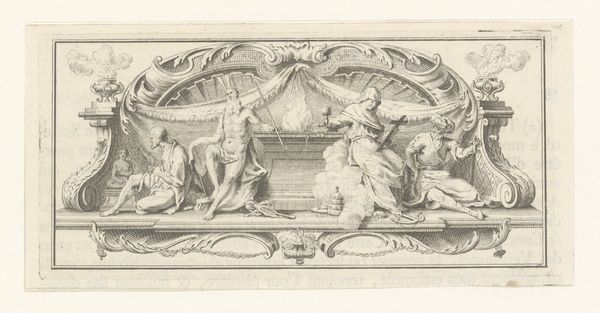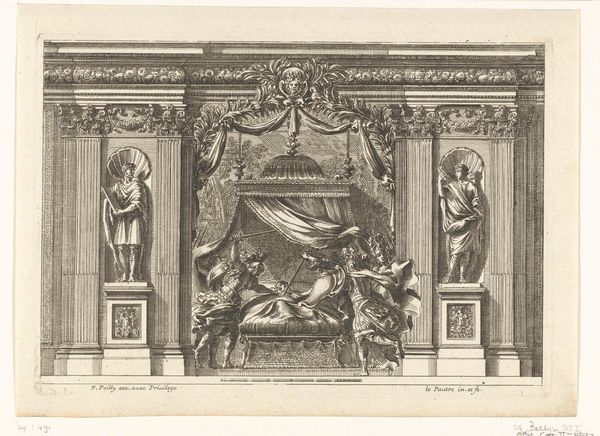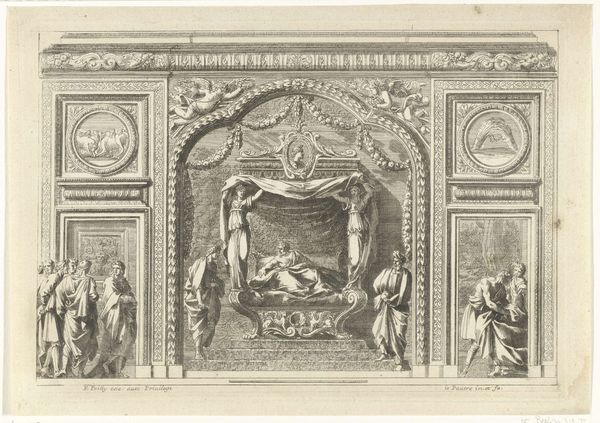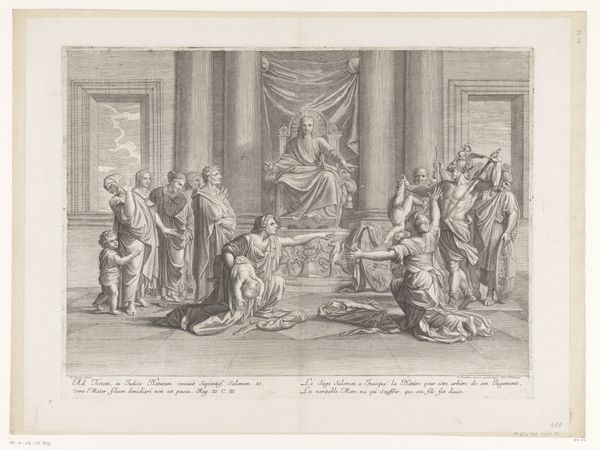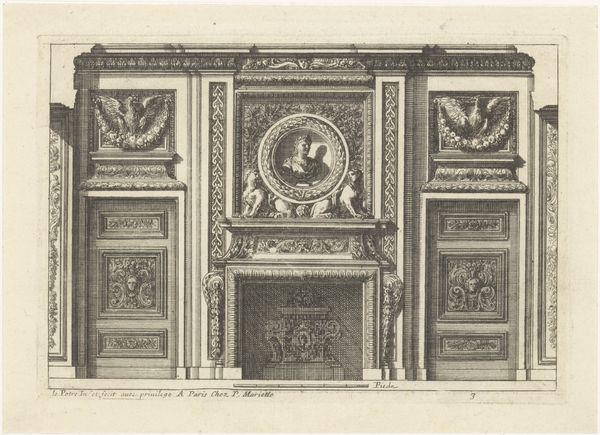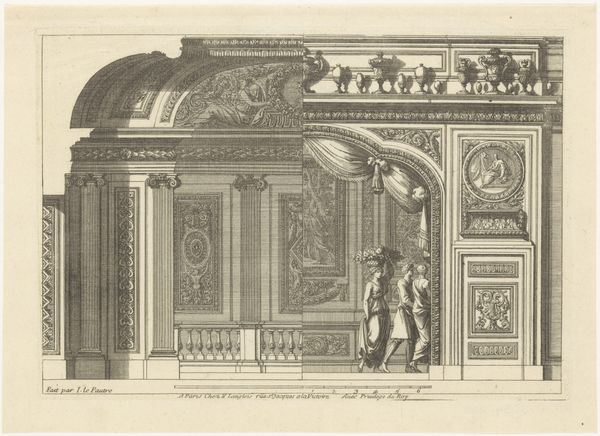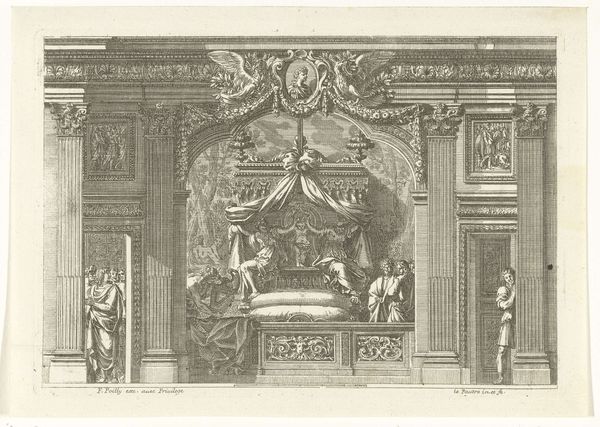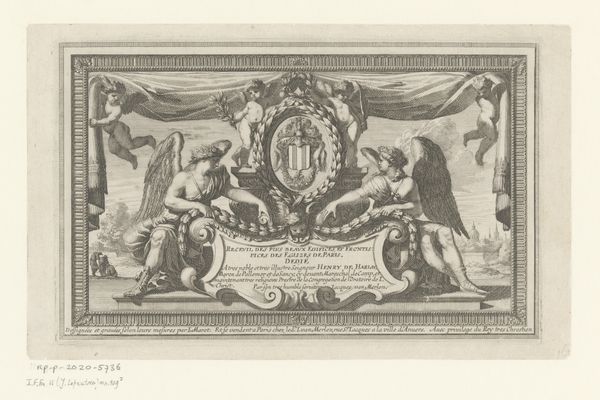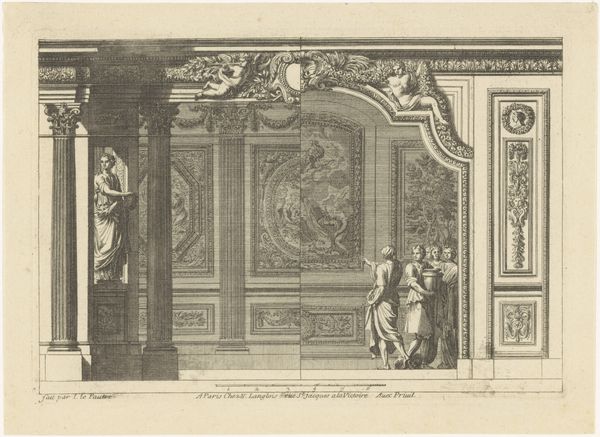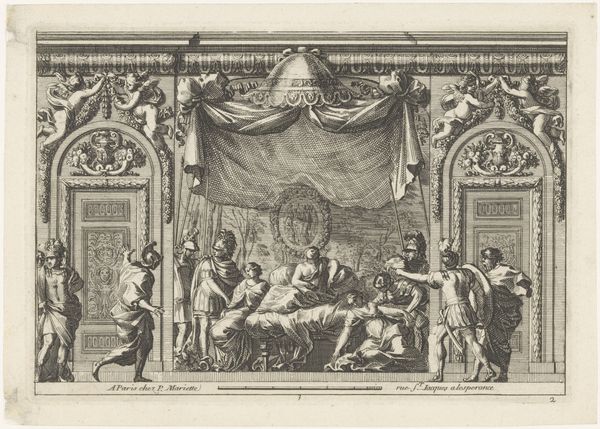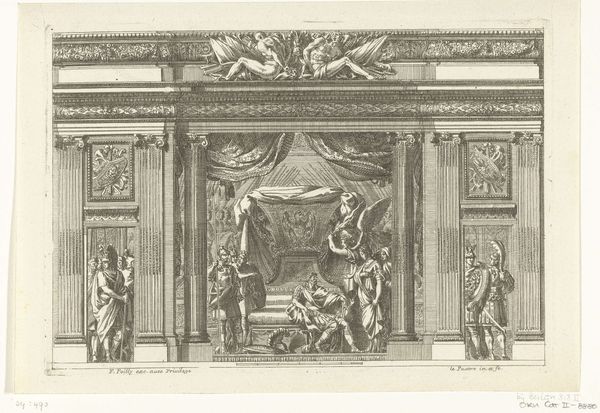
#
light pencil work
#
wedding photography
#
old engraving style
#
retro 'vintage design
#
personal sketchbook
#
illustrative and welcoming imagery
#
wedding around the world
#
pen-ink sketch
#
vignette lighting
#
cartoon carciture
Dimensions: height 213 mm, width 309 mm
Copyright: Rijks Museum: Open Domain
Curator: This intricate engraving, dating back to 1667, is titled "Jakob zegent de zonen van Jozef," which translates to "Jacob Blessing the Sons of Joseph." It’s currently housed in the Rijksmuseum, and the artist behind it is Jean Lepautre. It's so finely detailed, almost ethereal in its composition. What's your initial reaction to it? Editor: My eye immediately goes to the textures and how they're suggested with simple line work. All the drapery around the bed and on the figures, it all looks very opulent. I can imagine Lepautre's hand moving across the copper plate, pressing these lines, again and again. It is almost tactile. Curator: Absolutely, there's a sense of grandeur achieved through, as you say, repeated marks and intentional cross-hatching. For me, there's also a theatrical quality, a narrative unfolding within this defined, architectural space. It feels intimate, yet very staged. Like the actors are in the wings, waiting for their scene to start. Editor: You know, looking closer, the setting itself speaks volumes. All the architectural ornamentation in contrast to the softness of the figures and drapery—the scene becomes almost a factory for producing visual ideas and motifs, which would then spread widely in workshops and decorative objects, it´s the distribution chain in early modernity. Curator: Yes! Consider the context in which Lepautre was working, the booming industry around printmaking. These engravings served as templates, circulating decorative ideas across workshops. Did you notice how even in such a biblical scene, Lepautre is still engaging with contemporary decorative taste of the Baroque. It's clever subversion, or smart brand marketing. Editor: Exactly! What feels striking here is the tension between high art and the broader world of design and labor, as engravings became more about repeatable designs that informed craft more widely than purely standalone art. These images helped set trends in elite culture and trickle it down in a controlled but measurable way. Curator: So, it’s about material dissemination, mass consumption via a religious and period setting? I like that. Makes me ponder on what other "original" artwork from the time may be nothing more than cleverly marketed trends. Editor: It truly reveals how art and commerce have been entwined far longer than we often acknowledge, doesn’t it? That makes it an enduring reminder of the importance of studying not just the 'what' but the 'how' behind the works we encounter. Curator: Indeed. Thanks to your perspective, I see much more than biblical allusion; it’s the distribution chains behind culture that really grab you and remain with you.
Comments
No comments
Be the first to comment and join the conversation on the ultimate creative platform.
